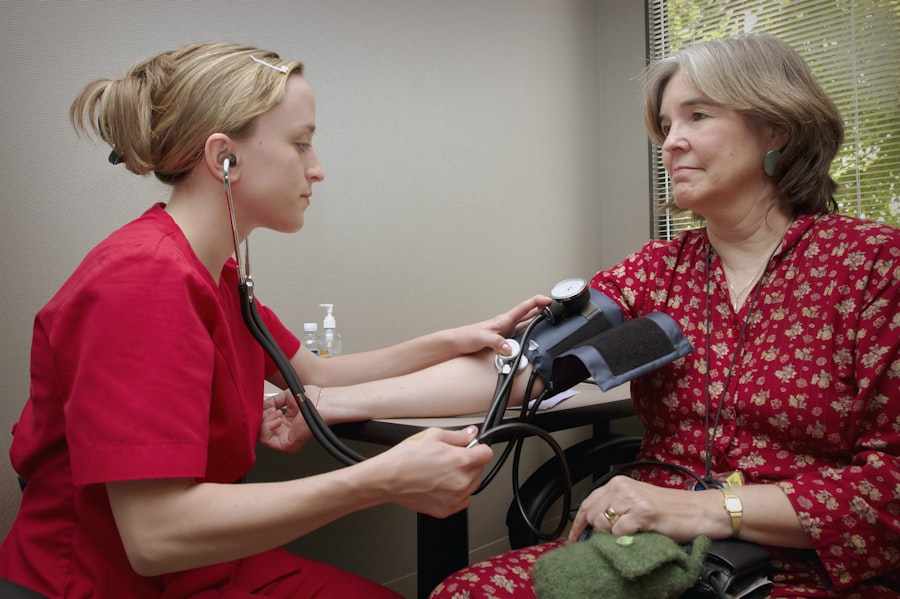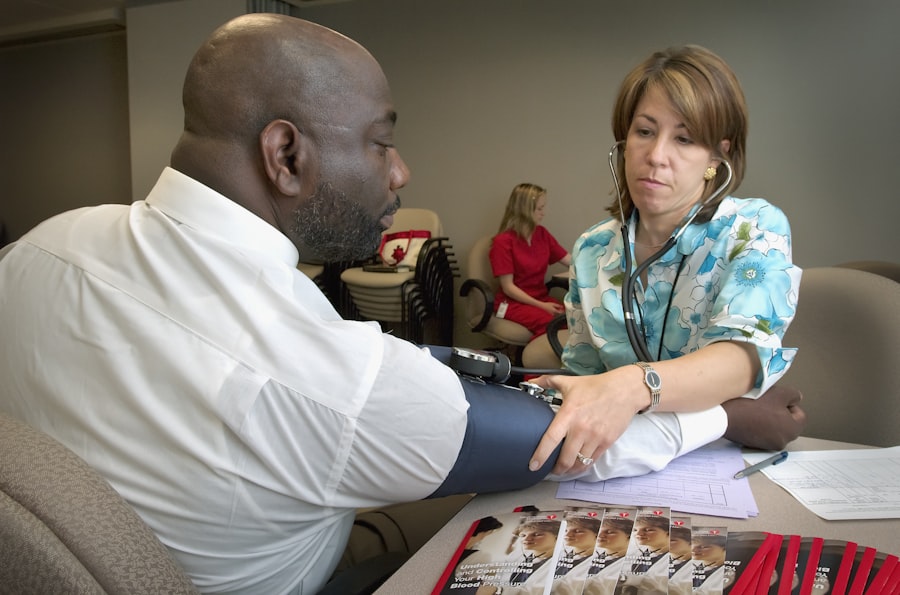When you decide to undergo laser hair removal, you embark on a journey that promises a more permanent solution to unwanted hair. The process begins with a consultation, where a trained professional assesses your skin type, hair color, and the areas you wish to treat. This initial meeting is crucial, as it allows you to discuss your goals and expectations while also addressing any concerns you may have.
The technician will explain how the laser works, targeting the pigment in the hair follicles to inhibit future growth. Understanding this mechanism can help you feel more at ease as you prepare for the treatment. Once you’ve decided to proceed, the actual procedure is relatively quick and straightforward.
You’ll be given protective eyewear to shield your eyes from the laser light. A cooling gel may be applied to your skin to enhance comfort during the treatment. The laser device is then moved over the targeted area, emitting pulses of light that are absorbed by the hair follicles.
You might feel a slight tingling sensation or a rubber band snap against your skin, but most people find it tolerable. Depending on the size of the area being treated, sessions can last anywhere from a few minutes to an hour. Afterward, you may notice some redness or swelling, but these effects typically subside within a few hours.
Key Takeaways
- Laser hair removal involves targeting hair follicles with concentrated light to inhibit future hair growth
- Post-treatment care for laser hair removal includes avoiding sun exposure and using gentle skincare products
- It is not recommended to squeeze hair after laser removal as it can cause irritation and potential damage to the skin
- Risks of squeezing hair after laser removal include infection, scarring, and disrupted hair growth patterns
- Alternatives to squeezing hair after laser removal include using a warm compress or seeking professional assistance for ingrown hairs
Post-Treatment Care for Laser Hair Removal
Protect Your Skin from the Sun
Avoid direct sunlight on the treated area for at least a week, as your skin will be more sensitive post-treatment. Exposure to UV rays can lead to pigmentation changes or irritation. If you must go outdoors, wear sunscreen with a high SPF to protect your skin.
Skincare and Hydration
Refrain from using harsh skincare products or exfoliants for several days, as your skin needs time to heal. Instead, focus on keeping your skin moisturized to alleviate any dryness or irritation that may occur after the procedure. Look for gentle, fragrance-free moisturizers that won’t irritate your skin further.
Managing Discomfort
If you experience any discomfort, over-the-counter pain relievers can be helpful. However, always consult with your technician before taking any medication. By following these guidelines, you can promote healing and enhance the effectiveness of your laser hair removal treatment.
Can You Squeeze Hair After Laser Removal?

You might be wondering about the fate of any remaining hair after your laser treatment. It’s common to feel tempted to squeeze or pluck any stray hairs that appear in the days following your session. However, it’s essential to understand that doing so can interfere with the results of your treatment.
The laser targets hair follicles during their active growth phase, and while some hairs may still be present after treatment, they are likely in a dormant state. Squeezing or pulling them out can disrupt this cycle and potentially lead to uneven results. Instead of resorting to squeezing, it’s advisable to allow your body to naturally shed any remaining hair over time.
After a few weeks, you may notice that some hairs fall out on their own as part of the natural hair growth cycle. This process can take several weeks, and patience is key. If you find that certain areas are particularly bothersome, consult with your technician about the best course of action rather than taking matters into your own hands.
Risks of Squeezing Hair After Laser Removal
| Risk Factor | Description |
|---|---|
| Skin Irritation | Squeezing hair after laser removal can cause skin irritation, redness, and inflammation. |
| Hyperpigmentation | There is a risk of hyperpigmentation, where the skin may darken in the areas where hair is squeezed. |
| Hypopigmentation | On the other hand, there is also a risk of hypopigmentation, where the skin may lighten in the areas where hair is squeezed. |
| Scarring | Excessive squeezing of hair after laser removal can lead to scarring, especially if the skin is sensitive. |
While it may seem harmless to squeeze or pluck hairs after laser hair removal, there are several risks associated with this practice that you should consider. First and foremost, squeezing can lead to skin irritation or even infection. The skin in the treated area is often sensitive and vulnerable after laser treatment, making it more susceptible to bacteria and other pathogens.
If you introduce bacteria into an open pore or follicle by squeezing, you could end up with an infection that requires medical attention. Moreover, squeezing hair can disrupt the hair growth cycle that laser treatment aims to regulate. By forcibly removing hairs, you may inadvertently stimulate new growth in areas where the laser has already inhibited follicle activity.
This could lead to uneven patches of hair regrowth or even an increase in hair density in some cases.
Alternatives to Squeezing Hair After Laser Removal
If you find yourself frustrated by stray hairs after laser hair removal but want to avoid squeezing them, there are several alternatives you can consider. One option is gentle shaving with a clean razor. Shaving can help remove any visible hairs without damaging the skin or interfering with the results of your treatment.
Just be sure to use a fresh blade and avoid applying too much pressure, as this can lead to cuts or irritation. Another alternative is using a depilatory cream specifically designed for sensitive skin. These creams dissolve hair at the surface level and can be effective for managing regrowth without causing trauma to the skin.
However, always perform a patch test before applying any product over larger areas to ensure you don’t have an adverse reaction. Consulting with your technician about suitable products or methods for managing regrowth can also provide valuable insights tailored to your specific situation.
Tips for Managing Regrowth After Laser Hair Removal

Managing regrowth after laser hair removal can be a delicate balance between patience and proactive care. One of the most effective strategies is to maintain regular follow-up appointments as recommended by your technician. These sessions are crucial for monitoring progress and determining if additional treatments are necessary for optimal results.
Your technician can also provide personalized advice on managing any regrowth between sessions. In addition to follow-up appointments, consider incorporating gentle exfoliation into your skincare routine once your skin has fully healed from treatment. Exfoliating helps remove dead skin cells and can prevent ingrown hairs from forming, which is particularly important in areas prone to such issues.
Look for mild exfoliating scrubs or chemical exfoliants containing ingredients like alpha hydroxy acids (AHAs) or beta hydroxy acids (BHAs). Always consult with your technician before introducing new products into your routine to ensure they are compatible with your post-treatment care.
Consulting with a Professional for Post-Treatment Concerns
If you have any concerns or questions following your laser hair removal treatment, don’t hesitate to reach out to your technician or dermatologist. They are equipped with the knowledge and experience necessary to address any issues that may arise during your recovery process. Whether you’re experiencing unexpected side effects or simply want clarification on post-treatment care, consulting with a professional can provide peace of mind.
Additionally, if you notice any unusual changes in your skin or hair regrowth patterns, it’s essential to seek professional advice promptly. Early intervention can help prevent complications and ensure that you achieve the best possible results from your laser hair removal journey. Remember that open communication with your technician is vital; they are there to support you throughout this process.
Long-Term Results of Laser Hair Removal
The long-term results of laser hair removal can be incredibly rewarding when approached with realistic expectations and proper care. Many individuals experience significant reductions in hair growth after completing their recommended treatment sessions, often leading to smoother skin and less time spent on grooming routines. While some may still see occasional regrowth over time, it is typically finer and lighter than before.
It’s important to note that individual results can vary based on factors such as hair color, skin type, and hormonal changes. Some people may require maintenance sessions every year or so to keep unwanted hair at bay fully. However, many find that even minimal regrowth is manageable compared to their pre-treatment experience.
Ultimately, investing in laser hair removal can lead to lasting benefits that enhance both your appearance and confidence in the long run.
If you’re interested in learning more about laser hair removal and how to properly care for your skin post-treatment, check out this article on home fashion. It provides helpful tips and advice on maintaining smooth and hair-free skin. Additionally, you may also want to explore




